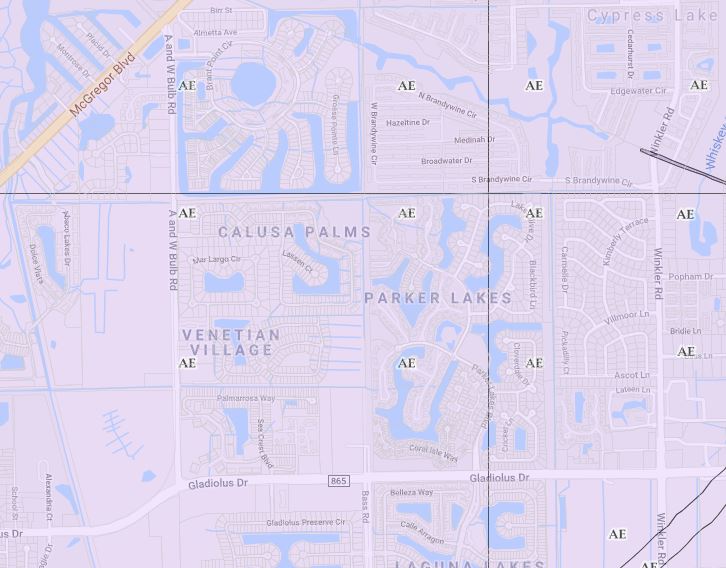About Cape Coral Flood Zones
Florida is a tropical climate. Which means it rains. Our rainy season in Southwest Florida is in the summer time – typically May through September. Usually, it rains for about a half hour to an hour in the early afternoon and then it stops and the sun comes back out. The cloud formations in the summer are beautiful.
Most communities in Southwest Florida are in a flood zone. Flood zones are defined by the federal government and food insurance rates are also set by the federal government.
Because Cape Coral, Fort Myers and other cities in the area have canal homes and condos, some people assume that properties on a canal are going to have higher flood insurance costs than inland properties. Not true.
To over simplify how flood zones, floways, and flood plains are classified, the elevation of the home is what determines the flood rate. So a property inland that is not on water can have the same flood zone rating as a canal home in Cape Coral. And inland homes sometimes have lower elevations that homes on the water. Generally speaking older homes (50s, 60s, 70s) have lower elevations because developers and municipalities were not building up the base with fill (soil) like they have in in more recent years.
These two images illustrate the AE flood zone designation in (randomly selected) areas of Fort Myers and Cape Coral. Inland areas can be more prone to short term flooding called sheet flow: temporary flooding from a rain storm that builds up on roads due to the simple fact that the water has nowhere to go. Cities in Southwest Florida have floodway and floodplain management systems for diverting water in a heavy storm and improvements to sheet flow control are ongoing.
In Cape Coral, canals are actually helpful because the city is infused with “floodway” management outlets. Meaning the water has somewhere to go – the canals themselves. When shopping for a home it is important to understand the flood zone rating during the due diligence phase – the inspection period. The elevation certificate documents the home’s base elevation – the guiding factor for the insurance premium.


